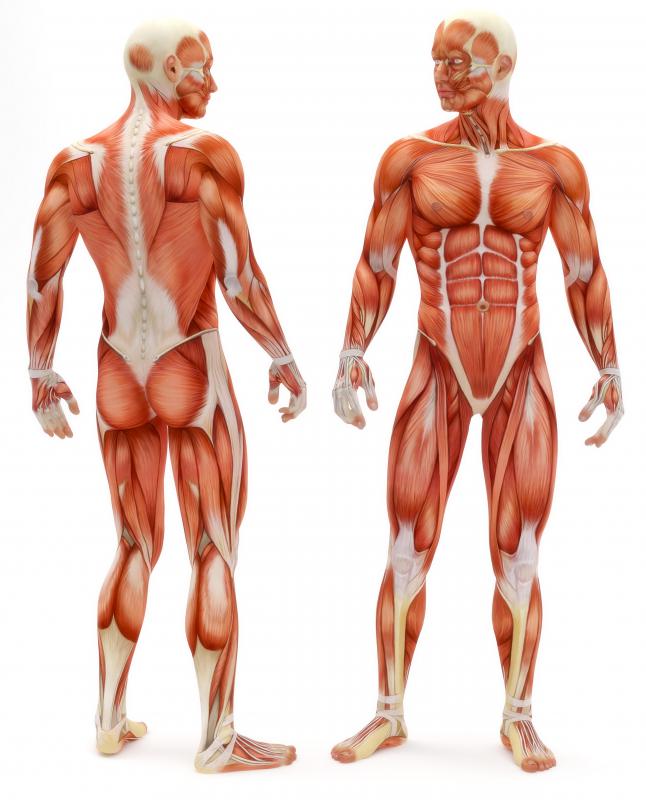At TheHealthBoard, we're committed to delivering accurate, trustworthy information. Our expert-authored content is rigorously fact-checked and sourced from credible authorities. Discover how we uphold the highest standards in providing you with reliable knowledge.
What is Contractile Tissue?
Contractile tissue is nothing more than the tissue used in muscles. It is so called because the tissue is able to contract, either on demand or involuntary. It has a number of unique properties in order to make it contract and exert force.
For this type of tissue to work, it must first receive a signal. This signal is in the form of an electrical impulse, which starts in the brain and travels to the muscle via the body's nervous system. Once at the muscle, a number of processes take over for the contractile tissue to function as intended.

Contractile tissue has both thin and thick filaments. In order to contract muscles, the thick filaments, made from a protein called myosin, connect via crossbridges to the thin filaments, which are made with a protein called actin. The smaller muscle filaments actually surround the larger ones. As the myosin contacts actin, it pulls the smaller filament across itself, causing contraction.
In order for the myosin to connect with the actin within the tissue, calcium binds to molecules known as troponin-tropomyosin molecules. Once this happens, those molecules change shape and allow the myosin access to areas on the actin where the cross bridges can form.
Once the action has been completed, there will come a time for the contractile tissue to relax. In order for that to happen, those cross bridges must be disconnected. To accomplish this, the body removes the calcium from the tissue and the troponin-tropomyosin molecules, allowing them to return to their normal shape. When that happens, the connections between the myosin and actin are broken and the tissue relaxes.
While this process may sound complicated, it is carried out within a fraction of a second and happens countless time each day. Muscles work both on our own impulse and without our permission, operating independently to carry out vital life functions.
Without contractile tissue, human life, and indeed most forms of animal life, would not be possible. Among its most important duties are generating heat, maintaining posture, stabilizing joints and, of course, producing movement.
AS FEATURED ON:
AS FEATURED ON:











Discussion Comments
@ Ceptorbi - Yes. All muscles contract due to actin and myosin. Cardiac muscle, however, contains intercalated discs. These discs connect the individual heart muscle cells and help synchronize heart contraction.
Do smooth muscle tissue and cardiac muscle tissue also contain contractile tissue and contract due to the interaction of actin and myosin?
Post your comments